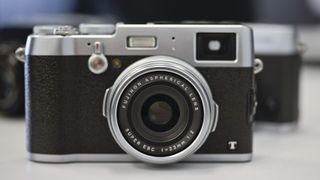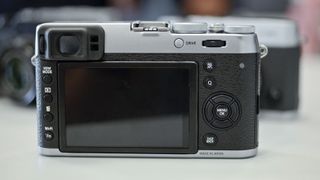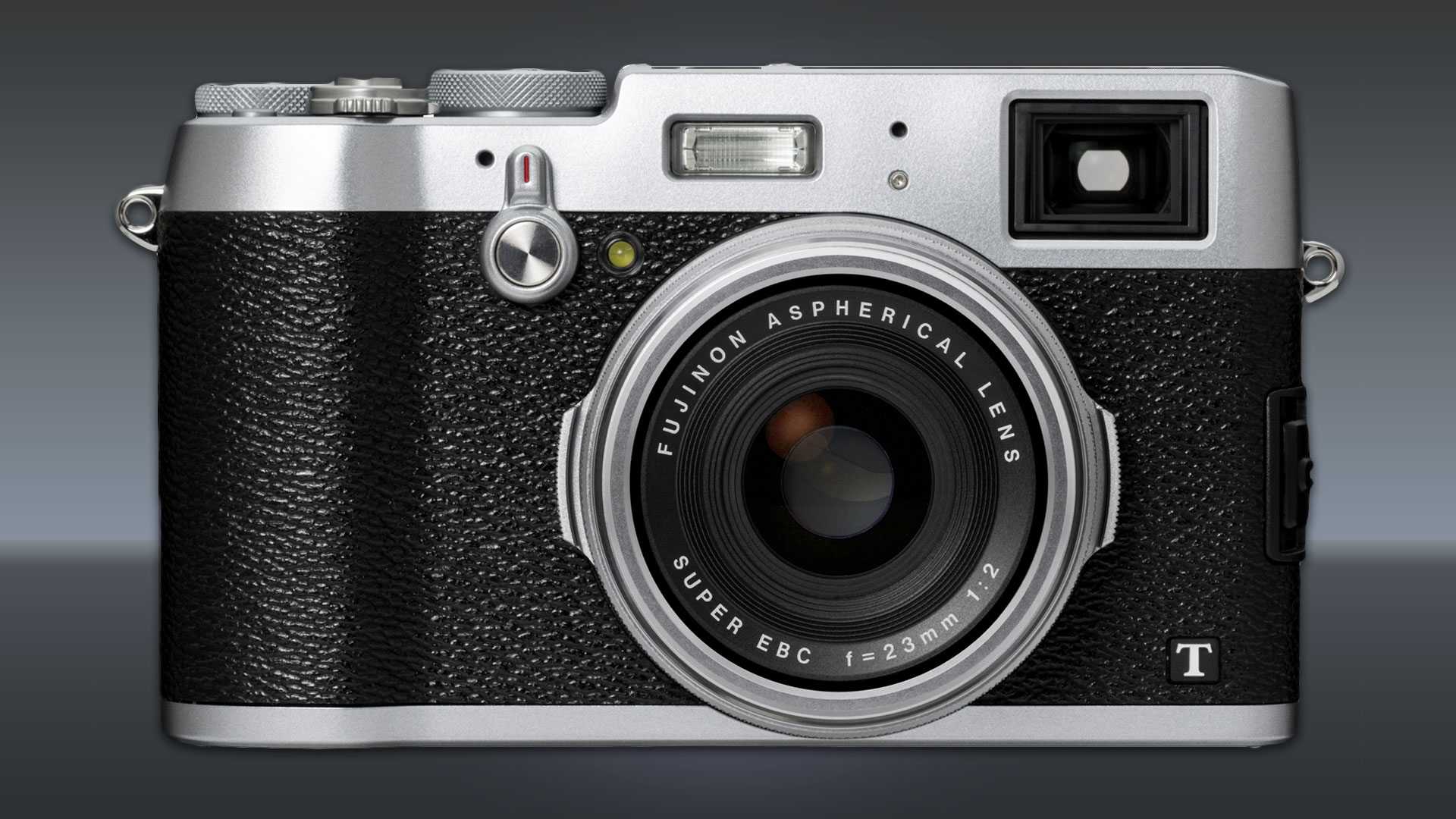TechRadar Verdict
A gorgeous camera which is a joy to use and produces beautiful images. There's a lot to love about the X100T.
Pros
- +
Beautiful design
- +
Traditional controls
- +
High resolution screen
- +
Hybrid viewfinder
- +
Inbuilt Wi-Fi
Cons
- -
Screen not touch sensitive, articulating or tilting
- -
No NFC
- -
The fixed, non-zoom lens won't appeal to everyone
Why you can trust TechRadar
Compact cameras with large sensors are very popular at the moment, while those such as the X100 series with its fixed length lens have a smaller, more niche, audience but are still very much admired.
Fuji cameras in particular have proven desirable because of their retro styling and controls, impressive hybrid viewfinder and high image quality courtesy of the APS-C sized sensor. The light and (relatively) small size of the camera also make them appealing to street and wedding photographers who wish to take off-the-cuff shots without attracting too much attention. There's also a large sensor with no anti-aliasing (AA) filter, which ensures lots of detail.
The latest incarnation in the series is the Fuji X100T, which is very similar to the X100S. It has the same 16 million pixel X-Trans CMOS II sensor and Fujinon 23mm (35mm equivalent) f/2 lens. It also features the same EXR Processor II, which at the time of the X100S's release was claimed to produce images with around 30% higher signal to noise ratio than those from the original X100.
The X-Trans CMOS sensor features a unique design which uses a 6x6 RGGB filter array pattern, with an effectively random arrangement of colour filters within each block of 36 photo receptors. Ultimately, this means that the sensor is less prone to moire patterning and that's why Fuji can get rid of the anti-aliasing filter for increased detail and sharpness.

One of the unique features of the Fuji X100 series is its hybrid viewfinder that can be switched between optical or electronic modes. The X100T updates this with the ability to see an electronic display in one corner of the optical viewfinder, which is designed to make manual focusing easier.
There have been other updates to the viewfinder, including projecting framelines when using the optical viewfinder that move to allow for parallax error when you're focusing on objects near to the camera. There's also Focus Peaking and Digital Split Image incorporated to further assist with manual focusing – the latter being dubbed an 'electronic rangefinder'.
As with the X100S, the X100T features a Lens Modulation Optimiser, which is designed to help the lens deliver sharp detail even shooting at narrow apertures, such as f/16, where the diffraction of light would begin to affect image quality.
Again, as with the X100S, the X100T uses a hybrid AF system that uses either contrast detection or phase detection depending on the AF point selected and the brightness of the scene.
Other, smaller, improvements have been made to the camera too. There's now a 3-inch, 1,040,000 dot viewfinder with a 3:2 ratio, compared with the 2.8 inch 4:3 ratio, 460,000 dot screen on the X100S.

Fuji's film-simulation modes have proven to be one of the most popular features of X-series cameras, recreating the look of traditional films, such as Velvia, Provia and Astia. For the X100T, Fuji has introduced a new simulation, Classic Chrome, to recreate the look of slide film with muted tones and deep colours – apparently this came at the request of street photographers when shooting serious subject matter.
You can also now set exposure compensation to +/- 3 EV (compared with +/- 2 EV before), and there's also the ability to set a maximum shutter speed of 1/32000 sec when using the new electronic shutter. This should be very useful for shooting at very wide apertures in bright sunlight, and there's also an inbuilt ND filter which reduces the light level by the equivalent of three stops.
As is pretty much the norm these days, the X100T features inbuilt Wi-Fi. This means that you can remotely control the camera from your smartphone or tablet, or quickly transfer your images for quick sharing to social networks and so on. There's no NFC communication included though for ultra quick connections between compatible devices.
Other features include up to 6fps shooting, full 1080p video recording, macro focusing as close as 10cm and Intelligent Hybrid AF with a claimed focus time of just 0.08 seconds.
There's not a huge pool of fixed lens, APS-C sized compact cameras to choose from, and Fuji is the only manufacturer to have produced an updated version recently – it competes with the Nikon Coolpix A and the Ricoh GR.
Amy has been writing about cameras, photography and associated tech since 2009. Amy was once part of the photography testing team for Future Publishing working across TechRadar, Digital Camera, PhotoPlus, N Photo and Photography Week. For her photography, she has won awards and has been exhibited. She often partakes in unusual projects - including one intense year where she used a different camera every single day. Amy is currently the Features Editor at Amateur Photographer magazine, and in her increasingly little spare time works across a number of high-profile publications including Wired, Stuff, Digital Camera World, Expert Reviews, and just a little off-tangent, PetsRadar.

